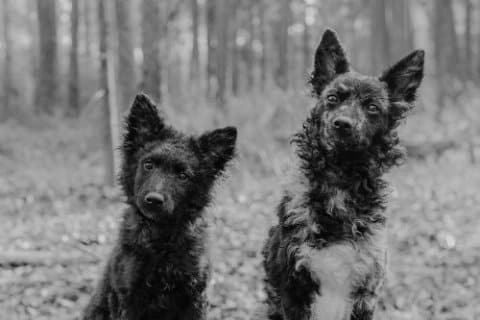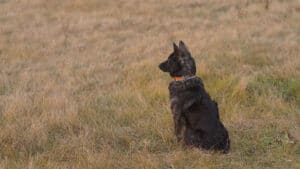
Canis Ovilis Fényesi – An Ideal Farm Partner
Meet the Mudi: a rare, intelligent herding dog from Hungary, perfect for farm work, agility, and as a versatile, loyal companion.

Home » Meet The Breeds » Mudi

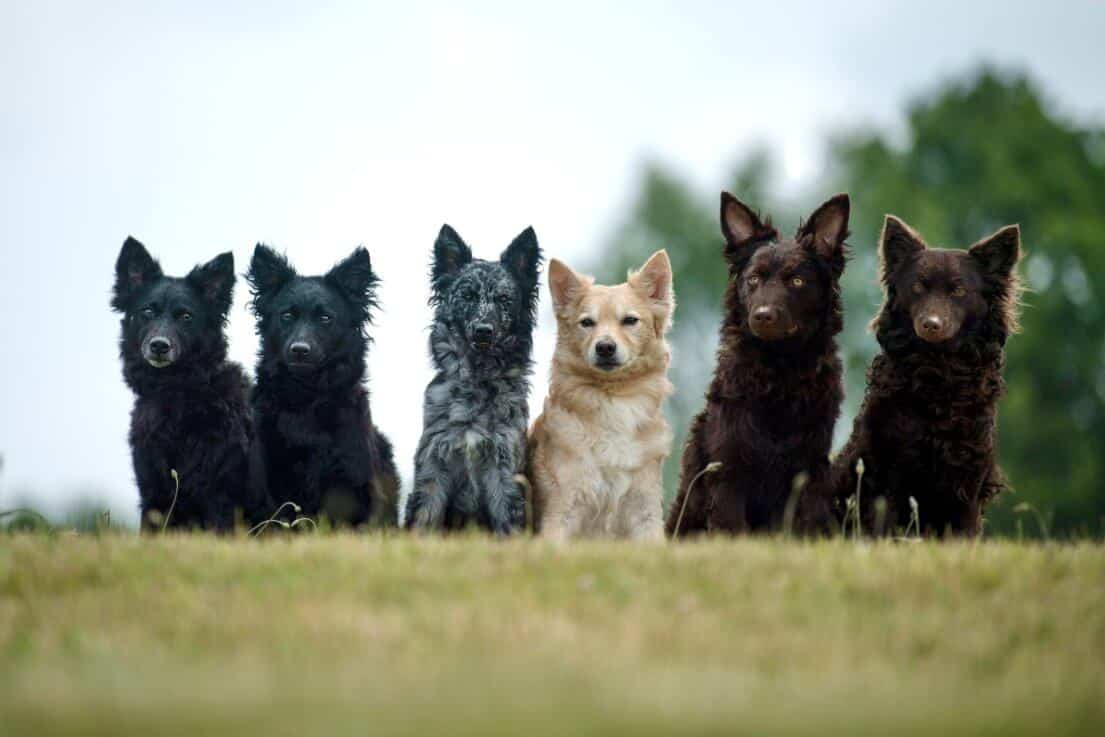
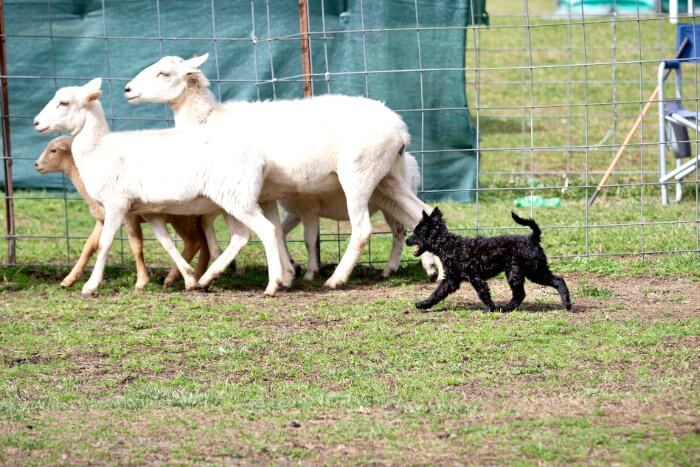
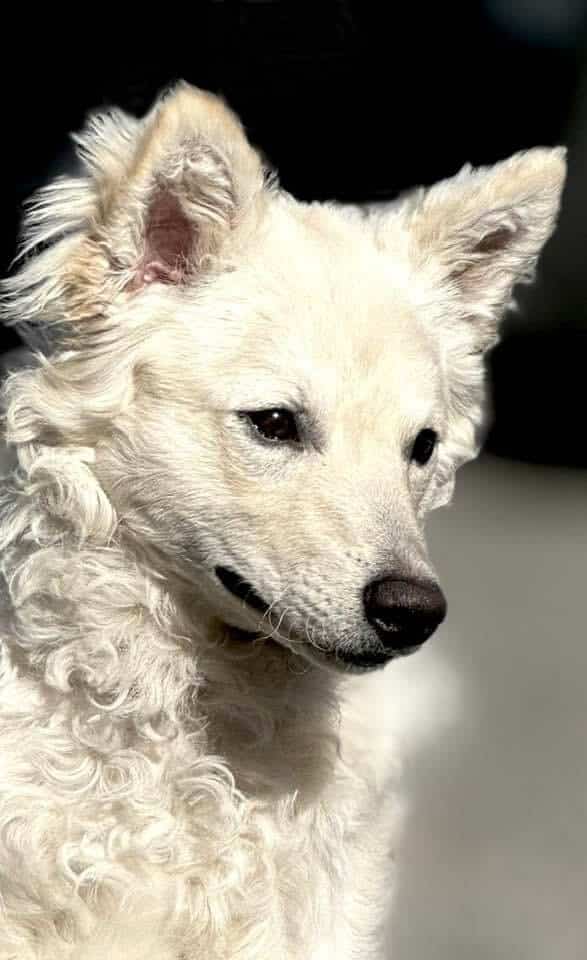
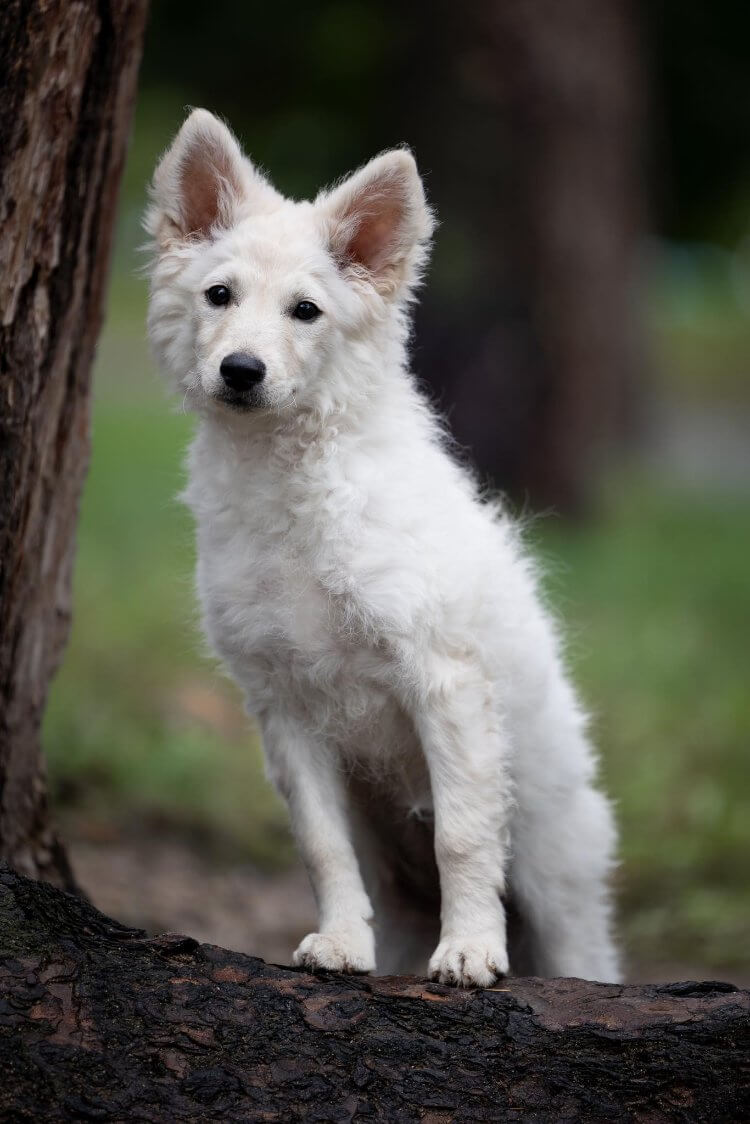

Mudi Club of America
07/04/2025
The Mudi is a herding breed from Hungary where it is still favored by shepherds to work sheep and cattle herds. In the United States, the breed is rare, with a small number of fanciers. The Mudi retains its strong herding instinct. The breed is very versatile, making it a contender in many active dog sports.
Herding
15 – 18.5 Inches
18 – 29 Pounds
12 – 14 Years
| Country of Origin | Hungary |
|---|---|
| Bred For | All-Purpose Farm Dog, Herding, Companionship |
| Known For | Loyal, Alert, Intelligent, Active |
| Popularity | Low |
| Temperament | Alert, Adaptable, Biddable, Energetic |
| Activities | Herding, Watchdog, Vermin Control, Search and Rescue, Dog Sports, and Conformation Dog Shows |
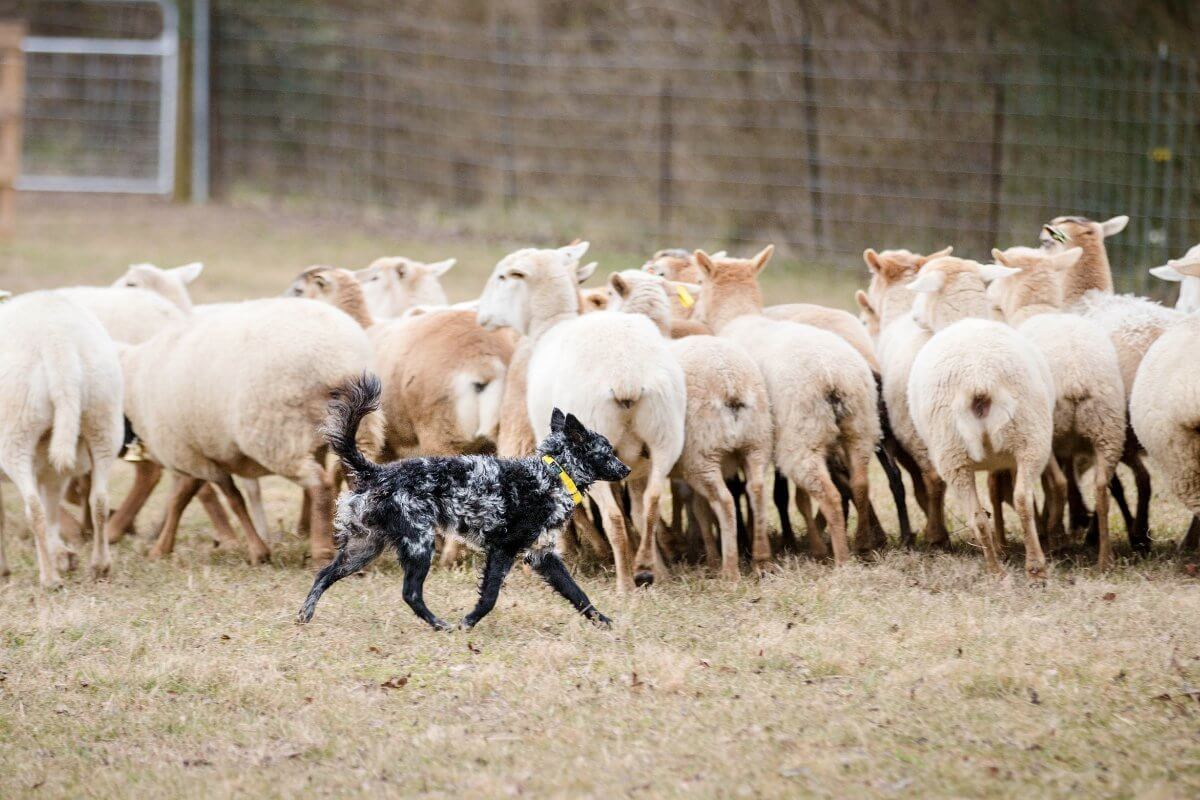
The Mudi is believed to be one of the oldest of the Hungarian sheepdogs, thought to have been in existence since the 9th Century. It is said that in ancient times this little sheepdog could be found in the lowlands of Pannonia, now parts of Hungary, Austria, and the former Yugoslavia. Some believe the Mudi came from crossings between the Puli and the Pumi, or from crossings between local sheepdogs and the Alsatian or German Spitz. Until the latter part of the 19th Century, Herding breeds in Hungary were simply categorized as small and large.
Around 1930, Dr. Deszö Fényesi, became involved in separate breeding of this small sheepdog. He is also the one who named the breed Mudi. In 1966, the FCI recognized the Breed Standard for the Mudi, written by Dr. Zoltan Balassy, based on a handful of Mudis (Mudik is the plural form in Hungarian) with color and size being the defining characteristics.
In the early 2000s, a few enthusiasts imported Mudis to the United States. Their dedication to the breed led to the Mudi being accepted into the AKC Foundation Stock Service (FSS) in 2004, then moving into the Miscellaneous Class, and finally, becoming recognized by AKC in the Herding Group in 2022.

The Mudi is medium-boned. The height from the withers to the ground is nearly equal to the body length from the point of the shoulder to the point of the buttocks. The depth of the brisket is slightly less than half of the height at the withers. The Mudi should stand squarely on all fours, and when viewed from the side, the topline, front legs, and back legs should closely approximate a square. The topline slightly slopes from the withers towards the croup.
Texture: The Mudi has a unique, easy-care, self-cleaning coat that does not tend to mat. The Mudi is presented naturally, never appearing sculpted, wooly, fluffed, or blown dry to obscure the curls and texture of the coat.
A Note About Color: Minimal white markings are tolerated but not desired on any color or pattern; this includes a white patch on the chest less than two inches in diameter and small white markings on the toes. No color is preferred over any other color and there is no preference of the solid vs. merle pattern.
The head is wedge-shaped and the length of the muzzle is slightly less than half of the total length of the head. The stop is defined but not obvious.
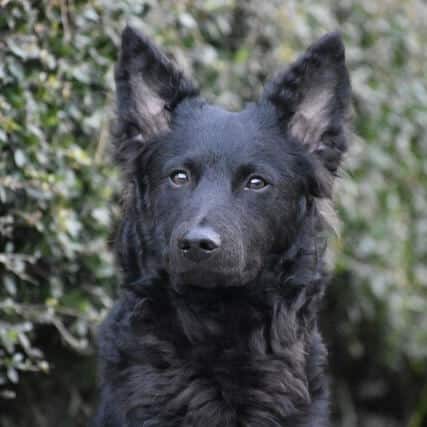
Tails come in all lengths, including a natural bob. When alert and during active movement, the tail can be carried higher than the topline. A full-length tail can be carried over the back in a loose, semi-circular fashion. When relaxed, the tail may hang below the topline. The tail is abundantly coated; the hair on the underside can be four to five inches long. No tail length is preferred over any other length.
Mudis are very versatile, athletic, small-medium-sized dogs that make good companions and serious workers. They are intelligent, loyal, healthy, fun, and need little grooming. Mudis can be very vocal. They can be aloof with strangers and may be reactive to people or dogs, so they need early socialization.
Some are prone to digging. Mudis are soft dogs that need gentle, consistent, patient training methods. They are high drive and energetic dogs that require daily exercise that engages both their brains and their bodies. Mudis have an “off switch,” allowing them to relax.
The breed is relatively healthy; however, there are reports of dogs with epilepsy, hip dysplasia, congenital cataracts, color dilution alopecia, and other inherited health issues.
Lifespan: The average Mudi should live to be 12 to 14 years old.
The Mudi is generally a healthy breed. Some of the health issues the Mudi may encounter include hip and elbow dysplasia, epilepsy, or progressive retinal atrophy.
Recommended OFA testing for Mudis is listed below:

Like many herding breeds, the Mudi can be aloof towards strangers and unfamiliar dogs, but around people they know, Mudis are friendly, affectionate, and playful. Mudis can do well with children and other animals if exposed to them from puppyhood. They are generally high energy and high drive and enjoy many dog sports. They tend to be environmentally aware and may exhibit nervousness or fear in some situations.
Mudis are active dogs that need a diet that is balanced for their life stage and appropriate for their energy needs. The food should be high quality and rich in protein and vitamins to support an active lifestyle. Most do well with two feedings per day, though puppies will require 3-4 feeding per day, depending on age. Adult Mudis typically eat 1-2 cups of kibble per day, depending on the size and activity level of the dog. Healthy treats can be supplemental but should not account for more than 10 percent of a Mudis caloric intake.
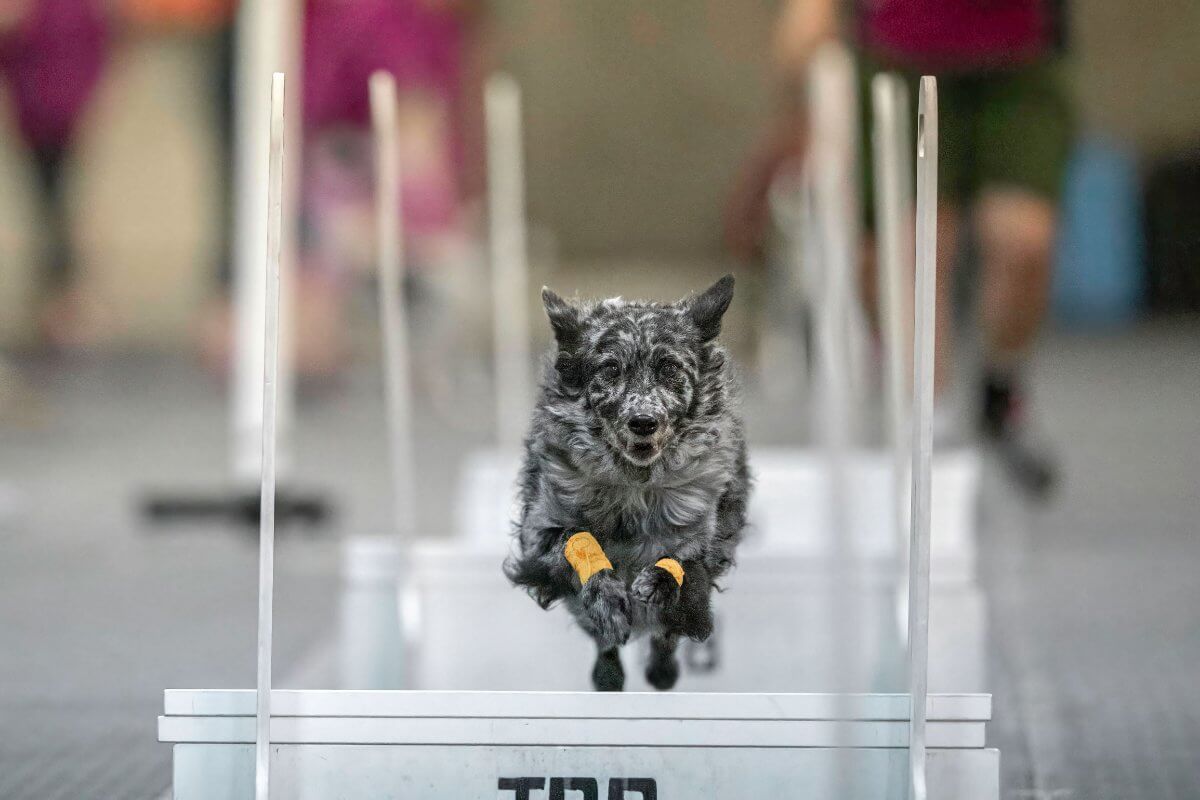
Mudis are very easy to train when using positive reinforcement rather than heavy-handed, dominance-based methods. The Mudi is a soft, sensitive dog that will learn quickly if he is trusting of his trainer, and they work together as a team. Mudis do not like repetition and do best with short training sessions. Their learning style is different from many other breeds; they are clever thinkers that may interpret cues in their own unique way.
Mudis are very energetic dogs. Though they are calm and relaxed in the house, once outside they appreciate a good run. Not surprisingly, Mudis excel at Flyball, Obedience, Herding, and Frisbee.
| Energy Level | High |
|---|---|
| Exercise Requirements | Daily vigorous exercise and mental stimulation, minimum of 1-2 hours per day. |
Mudis are quite playful and can be mischievous, particularly when it comes to digging—they are quite the little engineers. They are also noted for their extraordinary jumping ability. A well-exercised Mudi is a Mudi who tends not to find trouble elsewhere either by jumping over, or digging under, any fences keeping him from the greener other side.

The Mudi coat generally repels dirt, and they don’t need frequent bathing. The coat needs only an occasional brushing and there is no trimming. Shedding is little to moderate, mostly occurring in the spring. Nails should be trimmed weekly to biweekly, and teeth brushed at least three times per week.
| Coat Type | The face and front legs are covered by short, straight, and smooth hair. On the body, the coat is very wavy to curly, dense, and about 1 inch to 3 inches long. The tail is abundantly coated with longer hair. |
|---|---|
| Grooming Requirements | An occasional bath and combing or bushing to remove dead hair and regular nail care are sufficient for this wash-and-wear breed. The coat should be allowed to air dry to maintain the texture of the natural curls and waves. The coat is presented naturally with no trimming. Ears are cleaned as needed, and teeth brushed a minimum of three times per week. |
With their friendly personalities, eagerness to please, and protective but non-aggressive nature, Mudis make excellent family dogs for most homes. They get along with children and other animals if raised together. They do best with active families, and prospective owners should prepare for this herding breed’s exercise needs.
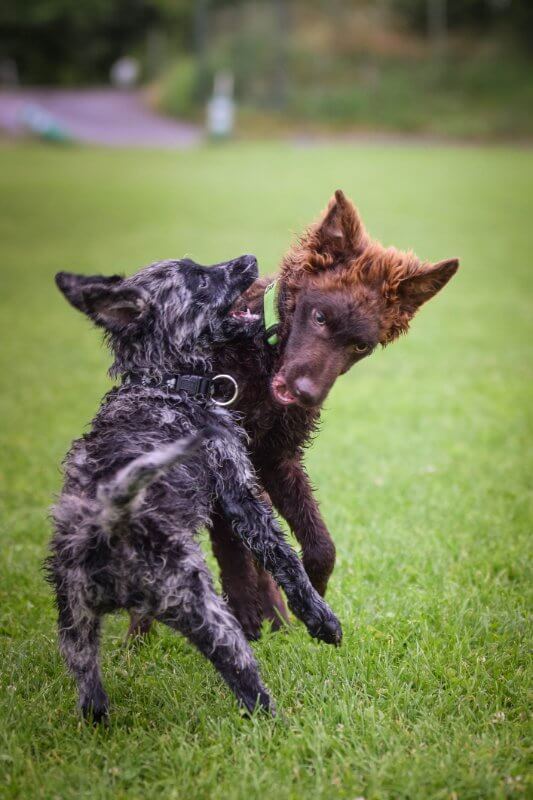
Mudis can have litter sizes ranging from a singleton to eight puppies, but the average is four to six puppies. The gestation period is the same as for other breeds, with puppies arriving about 63 days after conception.
Mudi puppies can be very active and vigorous with play, but will need down time, too. Early socialization and puppy classes can help to set a Mudi up for success later in life. It is common for Mudi puppies to have several fear periods as they mature; it is important to be supportive and minimize stress so that the puppy will grow into a confident adult. Puppies will require high-quality food to promote appropriate growth and development. Mudi puppies need regular visits to the veterinarian for recommended vaccinations and wellness checks.
The Mudi is recognized by the world’s leading registries and kennel organizations, which categorize the breed into a specific Group based on its unique characteristics. This breed is recognized worldwide under the following Group designations:
| Organization | Group Designation |
|---|---|
| AKC (American Kennel Club) | Herding |
| UKC (United Kennel Club) | Herding Dog |
| CKC (Canadian Kennel Club) | Herding |
| ANKC (Australian National Kennel Council) | Working Dogs |
| RKC (The Royal Kennel Club) | Not Recognized |
| FCI (Fédération Cynologique Internationale) | Group 1: Sheepdogs and Cattledogs; Section 1: Sheepdogs |
The ideal Mudi is described by a Breed Standard that is approved by each of the world’s leading registries and kennel organizations. The Breed Standards for this breed may be found in the following links:
| Organization | Breed Standard |
|---|---|
| American Kennel Club | AKC Mudi Breed Standard |
| United Kennel Club | UKC Mudi Breed Standard |
| Canadian Kennel Club | CKC Mudi Breed Standard |
| Australian National Kennel Council | ANKC Mudi Breed Standard |
| The Royal Kennel Club | Not Recognized |
| Fédération Cynologique Internationale | FCI Mudi Breed Standard |
The Mudi Club of America will assist any shelter or rescue organization in the US by listing them on their website (mudi.us/rescue).
The Mudi Association of Canada and its members will rescue, rehabilitate, and re-home any Mudi that needs help (Contact: Mudi-Rescue).
The Mudi, pronounced “moodie,” is a medium-sized herding dog from Hungary.
Mudis are sensitive, quick learners that respond to positive reinforcement that is consistent without excessive repetition.
Mudis have an “off switch” and are generally quiet in the house and not destructive.
Mudis tend to bark a lot, and they can be vocal when playing.
The Mudi is a light-to-average shedder with an easy-to-care-for, wash-and-wear coat that repels dirt.
Mudis need 1-2 hours of daily physical and mental engagement.
The Mudi is an intelligent, versatile, medium-sized dog who is a good companion and worker. He is smart, healthy, fun, and requires little grooming. He needs daily exercise and can excel in most dog sports. They get along with children and other pets if raised with them. Mudis tend to bark a lot, and some like to dig. They can be shy or reactive to strangers or dogs.
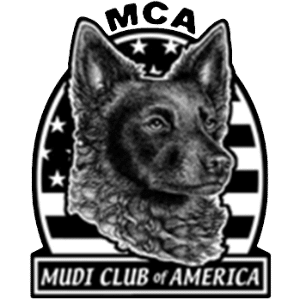
The Mudi Club of America (MCA) is the parent club to the AKC. It was organized in 2004 to promote, protect, and preserve the growing Mudi population in the US.

Meet the Mudi: a rare, intelligent herding dog from Hungary, perfect for farm work, agility, and as a versatile, loyal companion.
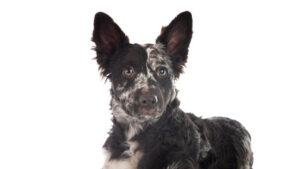
Discover the versatile Mudi: a Hungarian breed perfect for both family companionship and farm work. Learn 5 key facts about this unique dog!

Interview with Rebecca Ingersoll, breeder of Twisted Acres Kennel – Insights on Mudi and Border Collie breeding.
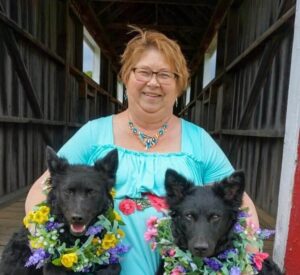
Interview with Owner Handler Theresa Stilger – I purchased my first purebred dog in junior high. I loved 4-H and my dog, but I wanted to try
The best way to ensure a long and happy relationship with a purebred dog is to purchase one from a responsible breeder. Not sure where to begin?
Contact the National Parent Club’s Breeder Referral Program, which is listed on the AKC Breeder Referral Contacts page.
